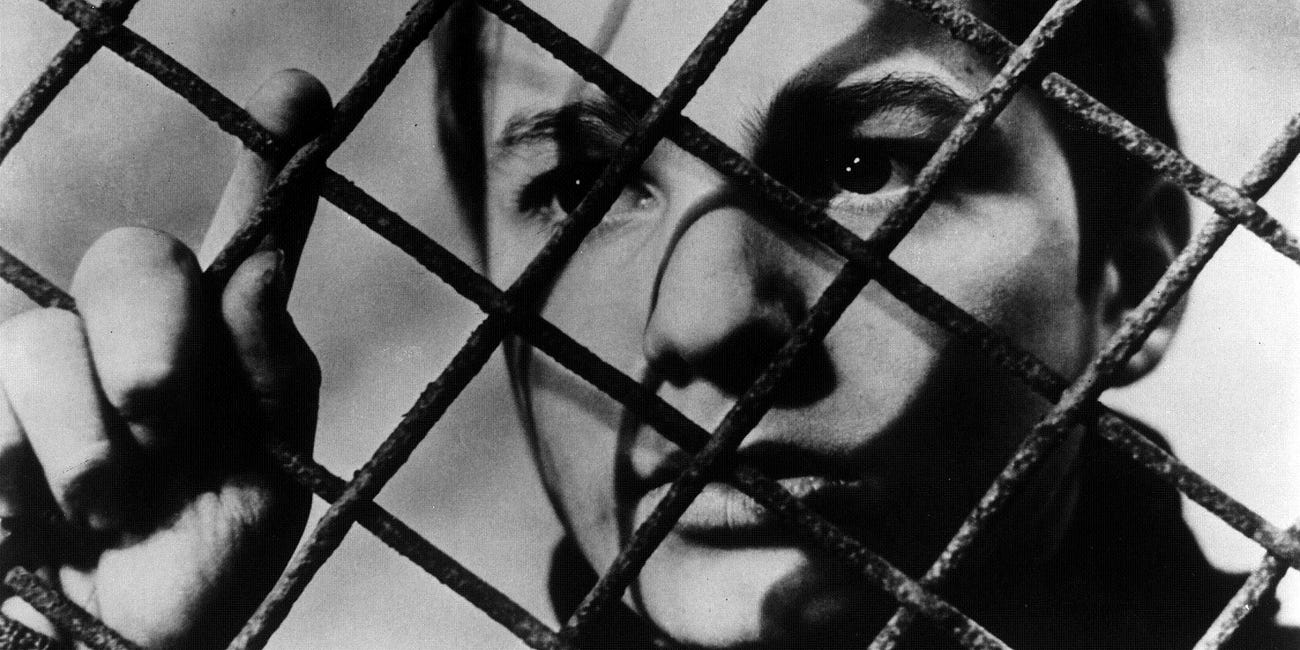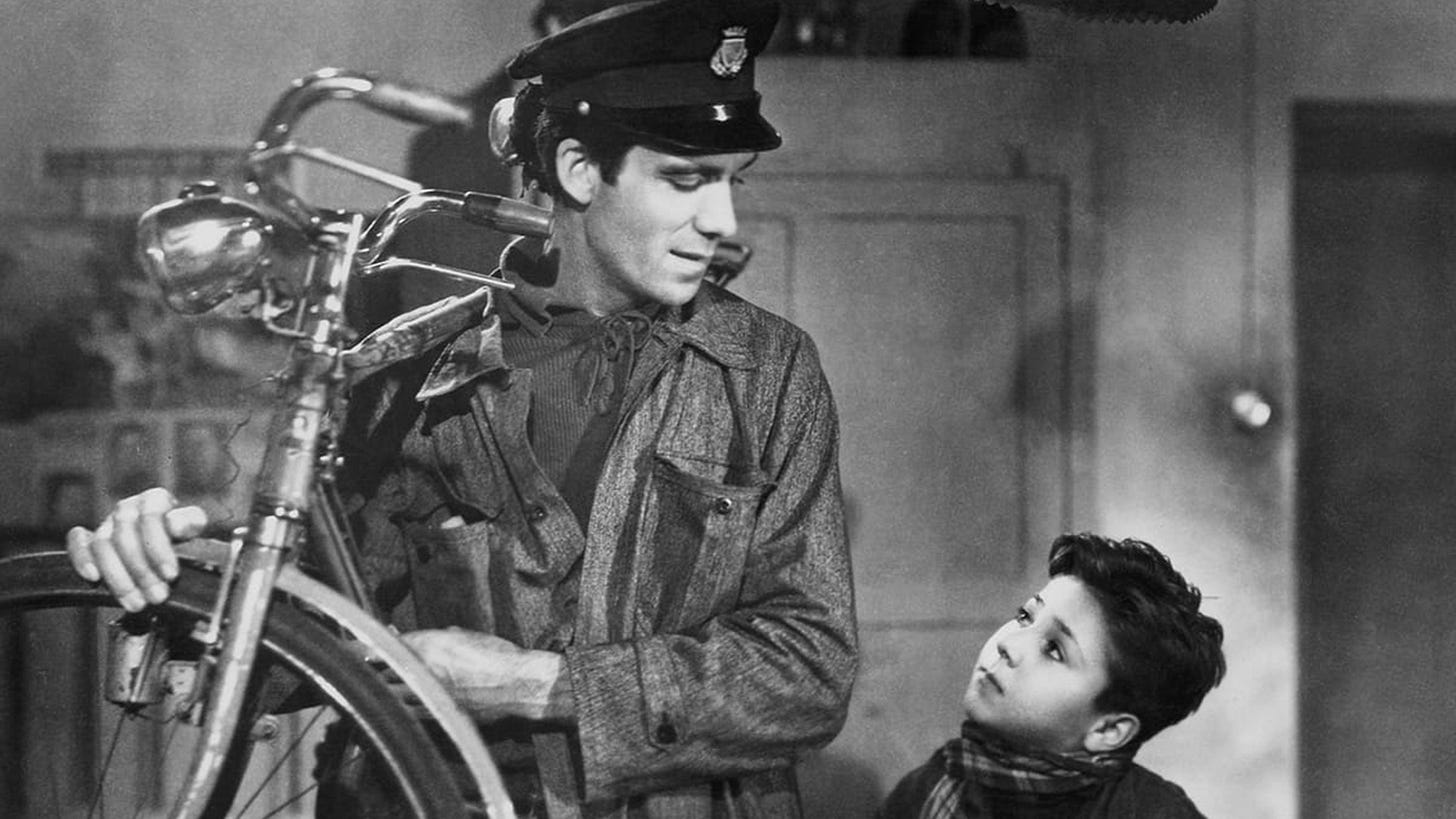Spoilers for Bicycle Thieves (1948).
I recently wrote an article for What’s in a Scene? about the French New Wave and its realism, focusing specifically on its use of natural lighting, handheld camera movements, and amateur actors.
Although the New Wave is a movement I love and believe to be one of the greatest in history, I wouldn’t necessarily call it ‘pure realism’. For me, a film can only be categorised as this if it displays both the techniques mentioned above and a subject matter that dives into real people and their struggles. For this, I would name Italian Neo-Realism as the ultimate example.
Born out of the end of the Second World War and the fall of Benito Mussolini’s fascist government, Italian Neo-Realism focused on the struggles of the working class and the difficult social and economic climate they endured.
Read our piece on the French New Wave by hitting the link below:
SCENES FROM A MOVEMENT: THE FRENCH NEW WAVE
“It feels like a sense of freedom. Anything can happen at any moment. Narrative is completely fractured” These are the words Martin Scorsese used to describe what can only be considered one of the most influential film movements of the 20th century. It not only revolutionised the tired and often Hollywood…
Mussolini’s government enforced strict censorship laws that stopped Italian filmmakers from expressing political views unless they towed the fascist party line. What did this leave Italian cinema with? Idealised copies of Hollywood movies that often said nothing of and meant nothing to ordinary Italians.
These were known as White Telephone films, taking their name from the white telephones used by their often rich characters. They were mainstream and gimmicky studio productions that copied Hollywood’s clean-cut style and included characters and stories that bore no resemblance to the realities of life in Italy at the time.
When the Allies won the war and Mussolini was overthrown, filmmakers finally got the freedom they desired. Realist Italian cinema had arrived, and the story of the ordinary person could finally be told.
Italian Neo-Realism was a breath of fresh air. It wasn’t flashy or glamorous. It was far from a Hollywood knock-off. Its primary function was to tell the stories of ordinary Italians and what their everyday lives looked like in a pure and unadulterated way. Instead of a studio, directors shot on location. Instead of actors, they used amateurs. Instead of the wealthy, films focused on the poor. It was, and still is, the height of realist cinema.
Realism dominated Italian cinema from the mid-1940s to 1950, so you can probably imagine how many greats there are to choose from. For me, there’s one movie that stands out from the rest and acts as the gold standard: Vittorio De Sica’s Bicycle Thieves.
Bicycle Thieves has it all. Want drama? You’ve got it. Craving action? No problem. The shining light of the film, though, is its cutting social conscience.
In a depleted post-Second World War Rome, the narrative revolves around Antonio Ricci (Lamberto Maggiorani). Like many of the city's poor, Antonio is out of a job, but to his delight finally lands one, the only caveat being that he needs a bicycle. When his bike is stolen on his first day, Antonio and his son Bruno (Enzo Staiola) scour the city in search of it, highlighting the harsh realities of Italy’s working classes as they search.
The film is the defining example of what Italian Neo-Realism was all about. It was shot on location, giving us a taste of the genuine poverty in the city and adding a documentary-like authenticity. Cinematographer Carolo Montuori also used natural lighting which added to this. De Sica’s encouragement of improvisation also allows the film to breathe adding an extra layer to this documentary style.
But this is just realism, right? Not exactly. The cornerstone for any great realist film isn’t how it’s shot, but what it’s about.
Take the final scene. After searching high and low for the bike, and knowing that finding it could mean the difference between starvation and survival, Antonio finally breaks. He’s lost more than just a bike. He’s also lost hope, dignity, and the ability to provide for his family.
As his desperation becomes too much to bear, the roles are reversed. As his shocked son watches on, he turns and tries to steal a bike himself. He tries to cycle away, but a mob catches on and chases him through the streets, eventually pulling him off. Saved only by the mercy of the crowd, he and his son walk into the sunset empty-handed.
The scene is a pure representation of the loss of innocence Italians faced after the war. If you look at it through a father’s eyes, you see a man desperately trying to provide for his family in the face of almost certain failure. If you look at it through a son’s eyes, you see your father failing and begin to understand the unfairness of the world around you.
Both these views cut deep into the fabric of post-war Italian society, shining a light on the desperation and fragility people faced. It only goes to show that to make a pure realist film, you need to show people for what they are and what they have. As painful as it is, many people have nothing. Not everyone gets a happy ending. Although Bicycle Thieves is sobering, it’s also a beauty and deserves to be recognised as one of the great social-realist films.
Director: Vittorio De Sica
Writers: Oreste Biancoli, Suso D'Amico, Vittorio De Sica, Adolfo Franci, Gherardo Gherardi, Gerardo Guerrieri, Cesare Zavattini. Based on the novel by Luigi Bartolini
Starring: Lamberto Maggiorani, Enzo Staiola, Lianella Carell










